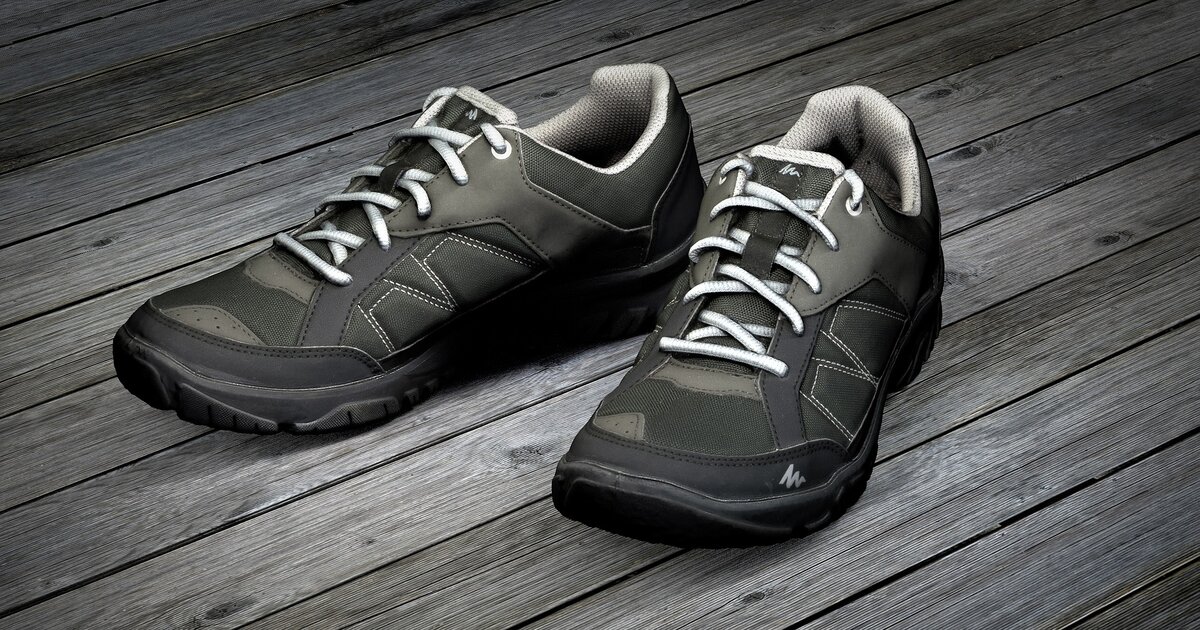Posture is not just about standing tall; it’s a foundation for overall health. The shoes we wear play a critical role in supporting our body’s alignment, from our feet up through our spine. Choosing the right footwear can be a step towards correcting postural imbalances and reducing discomfort. Let’s explore how the design of posture correcting shoes can contribute to spinal health and what sets them apart from your average pair.
On this page:
The Science Behind Shoes That Correct Posture and Spinal Health
Understanding the link between posture shoes and spinal health requires a dive into human anatomy. Our feet are the foundation of our body’s structure, much like the base of a tower. They bear the weight of our entire body and their positioning can affect how well the rest of the body aligns, including our spine.
The science connecting posture shoes to spinal health is rooted in the concept of biomechanics. Biomechanics studies the structure and function of biological systems, such as the human body, through the lens of physics. When it comes to posture shoes, biomechanical principles are applied to design footwear that promotes a more natural foot position. This design can help distribute weight more evenly across the foot, which can lead to better alignment of the ankles, knees, and hips, and ultimately the spine.
Posture shoes typically feature a design that supports the arch of the foot and provides cushioning where it’s needed. This support helps to stabilize the foot and can reduce overpronation (when the foot rolls inward too much) or supination (when the foot rolls outward). By addressing these common issues, posture shoes aim to create a more balanced posture from the feet up.

The spinal column is made up of vertebrae that are cushioned by discs and supported by muscles and ligaments. Poor foot posture can lead to an uneven distribution of pressure up the body, which can cause the muscles and ligaments to work harder to maintain balance. This can result in back pain or spinal issues over time. By correcting foot posture, these shoes can help to reduce the strain on the spine, potentially alleviating discomfort and promoting better overall spinal health.
Evaluating the Top 5 Posture Shoes on the Market
The market offers a variety of options, each with unique features aiming to align your spine and support your body’s natural stance. Let’s dive into the top 5 posture shoes currently available, considering their design, support, and customer experiences.
- Aspire Align Footwear, these shoes boast a custom Align orthotic, which is engineered to position the heel slightly higher than the toes. This subtle elevation can lead to an improved posture as it encourages the body to stand straighter. Customers often report less back pain and appreciate the shoe’s comfortable fit.
- SoleHealers Foot Alignment Shoes stand out with their embedded stretch and flex grooves, which not only support the foot but also encourage active movement. This can help strengthen foot muscles over time, potentially leading to better posture. The feedback frequently highlights the shoe’s benefit for those on their feet all day.
- Posture Plus+ Walking Shoes offer a dual-density midsole that provides both cushioning and arch support. The built-in heel cup is designed to stabilize the foot, which may contribute to a more upright posture. Users value the combination of comfort and posture support these shoes provide.
- BalanceWorks Posture-Corrective Sneakers, integrates a kinetic wedge sole that gently rocks the foot forward, mimicking the natural walking motion. This can help align the spine and reduce pressure on joints. Reviews often mention the ease of walking and the reduction in heel pain.
- ErgoAlign Active Sneakers feature a patented sole technology aiming to distribute weight evenly across the foot. This design aligns the ankles, knees, and hips, which can improve posture. Wearers commend these shoes for their effectiveness in reducing foot fatigue and promoting an active lifestyle.
Each of these top 5 posture shoes has its approach to supporting spinal alignment and improving posture. While they share the goal of fostering better health through footwear, individual features and user experiences may guide your choice according to your specific needs.
How to Choose the Right Posture Correcting Shoes for Your Needs
First, assess your foot type. Whether you have flat feet, high arches, or neutral arches, the right shoe should offer adequate support for your arch type. Flat feet typically require shoes with built-in arch support, while high-arched feet need cushioning to absorb shock.
Next, think about the fit. Shoes that are too tight can lead to discomfort and even injury, while shoes that are too loose won’t provide the necessary support. A proper fit means there’s enough room to wiggle your toes, but your heel doesn’t slip when you walk. Also, try on shoes in the afternoon or evening, as feet can swell during the day.
Consider the shoe’s heel counter, which is the part that wraps around the back of your heel. A sturdy heel counter can enhance stability and reduce the risk of overpronation or supination, which can misalign your posture. The heel should be snug but not tight, with no pinching or pressure.
Another key element is the sole. Look for shoes with a sole that’s flexible enough to allow natural foot movement but also provides cushioning and shock absorption. A good posture shoe should have a balanced, stable base that distributes your weight evenly across your foot.

Take into account the activity you’ll be using the shoes for. If you’re standing for long periods, look for shoes with ample cushioning and support to reduce strain on your lower back. If you’re active and need shoes for walking or running, focus on options that offer motion control and good traction.
The Role of Minimalist and Barefoot Shoes in Postural Alignment
Minimalist and barefoot shoes, unlike traditional footwear, are designed to mimic the natural shape and mechanics of the foot. By being less restrictive, they allow the foot to move and flex as if one were walking barefoot. This design philosophy can play a significant role in postural alignment.
When wearing minimalist shoes, the feet are more engaged with the ground. This engagement encourages a more natural gait cycle, starting from the way the foot strikes the ground to how the force travels up through the legs and into the spine. The thin, flexible soles of these shoes provide sensory feedback, which can help in enhancing balance and body awareness. This feedback allows wearers to adjust their posture and gait on the fly, promoting a more upright and aligned stance.
Barefoot shoes also feature a zero-drop from heel to toe. In contrast to elevated heels that can tilt the pelvis forward and curve the lower back, a zero-drop allows for a more neutral spine position. This alignment can reduce the strain on the back muscles and may alleviate some forms of back discomfort often associated with poor posture.
The wider toe boxes in minimalist shoes let the toes spread out naturally. This spreading can strengthen foot muscles and improve stability, which is crucial for maintaining proper posture. Stronger feet mean a stronger foundation for the body, and a stable foundation is key to good posture.
While minimalist and barefoot shoes can support postural alignment, it’s important to transition to them gradually, giving the body time to adapt to the new mechanics and sensations.
Incorporating Shoe Insoles for Enhanced Postural Support
When it comes to bolstering your posture through footwear, shoe insoles can be a game-changer. These inserts slide into your shoes and work subtly yet effectively. They offer additional support where it’s most needed, often targeting the heel and arch of the foot. This tailored support helps in distributing your weight more evenly, which is crucial for maintaining proper alignment.
Shoe insoles come in various materials like gel, foam, or a combination of both, which provide different levels of cushioning and support. Some are designed with a rigid arch to prevent the foot from over-pronating, which is when the foot rolls inward too much. Others have a deep heel cup that keeps the heel aligned and helps control the foot’s positioning as it strikes the ground.
Insoles can cater to specific issues such as flat feet, high arches, or plantar fasciitis, all of which can impact posture if left unaddressed. By addressing these foot-specific concerns, insoles contribute to a more stable base for your spine, potentially easing back discomfort and improving overall posture.
It is important to note that while insoles can provide significant benefits, they are not a one-size-fits-all solution. It’s essential to select insoles that match your foot type and address your particular needs. For some, a custom-made insole might be the best route, providing a personalized solution based on a podiatrist’s assessment.
Insoles are not a permanent fix but a complementary approach. They should be replaced regularly, as their supportive qualities wear down with use. Worn-out insoles can end up doing more harm than good by failing to provide the support needed for good posture. Regular assessment of your insoles’ condition is key to ensuring they continue to contribute positively to your foot health and postural alignment.
Caring for Your Posture Shoes and Foot Health Tips
Posture shoes typically have a supportive design that needs to be kept in good shape to continue providing the benefits they are designed for. Keep them clean by wiping away dirt and debris with a damp cloth. Avoid submerging them in water or using harsh chemicals as this can damage the supportive materials. Air them out after use to prevent moisture build-up, which can lead to odor and deterioration of the shoe interior.
For the insoles, if they’re removable, take them out regularly to air. Gentle cleaning with mild soap and water can help maintain their condition, but be sure to let them dry completely before putting them back into the shoes. In case the insoles wear out, consider replacing them to maintain the level of support.
Foot health goes hand in hand with the condition of your shoes. Wash your feet daily, dry them thoroughly, and pay attention to any changes or discomfort. Keeping toenails trimmed straight across prevents ingrown toenails, and using a moisturizer can prevent cracks and dry skin. If you experience persistent foot pain, it could be a sign that your shoes are not providing proper support or that you need to consult a healthcare provider.
The right fit is essential for shoes that correct posture. Shoes that are too tight can lead to blisters and calluses, while those that are too loose can cause friction and instability. Replace posture shoes when they start to show signs of wear, especially in the outsole and midsole, as this can affect their ability to support proper alignment.
Steps Forward for Optimal Posture
Taking the right steps toward optimal posture involves more than just standing straight—it’s about supporting your body from the ground up. Posture shoes can be a crucial part of this journey, offering the necessary foundation for spinal health. Remember, the best posture shoes for you are those that meet your specific needs—be it additional arch support, cushioning, or a minimalist design. Incorporate shoe insoles if you need extra support. Care for your shoes as you would any other tool that enhances your wellbeing. Moving forward, make a conscious effort to check your posture throughout the day and adjust as needed. Your body will thank you for it, rewarding you with less pain and more vitality. Let your footwear pave the way to a healthier, more aligned you.
